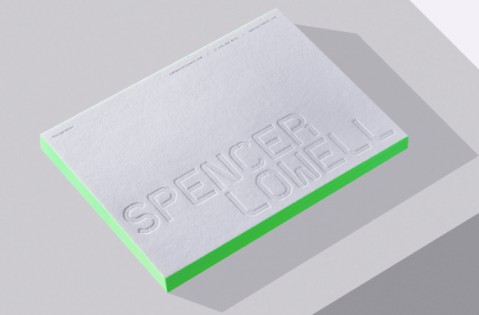LAMINATION AND TYPES OF LAMINATION

Lamination has remained popular for decades, and its versatility continues to drive its demand. Whether you’re looking to protect documents or enhance their visual appeal, laminating offers tailored solutions to meet various needs.
In this article, we delve into three primary types of lamination:
- Matte Laminating
- Glossy Lamination
- Soft Touch Lamination
Benefits of Lamination
Laminating serves more than just the preservation of delicate items; it offers a range of practical advantages that enhance durability and aesthetics:
Protect from Scratching: Laminating creates a robust barrier against scratches, tears, smudges, and scuffs, ensuring your documents, menus, or maps remain usable and presentable for longer periods.
Extend Product Life: Applying a thick laminate significantly increases the durability of printed materials, making them resilient to daily wear and tear, thus extending their lifespan.
Avoid Damage from Liquids: Lamination protects printed materials from water and other liquids, crucial for items like menus or brochures that may encounter moisture in environments such as restaurants or outdoors.
Enhance Look & Feel: Lamination offers customization options like matte, glossy, or soft-touch finishes. These not only enhance the appearance but also add a tactile quality that complements the theme or branding of the item.
UV Light Protection: By laminating, you shield documents from harmful UV light, which can fade colors and degrade paper quality over time. This protection preserves the original appearance and longevity of the printed piece.
Laminating thus serves as a versatile solution that not only safeguards but also enhances the visual appeal and lifespan of printed materials across various applications.
Matte Lamination
Matte Lamination is a printing and design technique that adds a non-glossy, matte finish to printed materials. Often described as “flat,” matte lamination involves applying a matte film coating to the surface of documents or packaging.
This type of lamination is prized for its non-reflective properties, making it suitable for various themes and applications. It can enhance the appearance of premium products, impart a rustic feel, or achieve a simple and affordable look. Matte lamination is a timeless choice and remains a favorite for its versatility and classic appeal.
Glossy Lamination
Glossy lamination is a popular finishing technique in printing and graphic design that enhances both the appearance and durability of printed materials. This process entails applying a thin layer of glossy plastic film, usually composed of polypropylene or polyester, onto the surface of a printed document or packaging.
Unlike matte lamination, which offers a non-reflective finish, glossy lamination provides a highly reflective, shiny appearance. It is favored by designers for its ability to showcase colors vividly and add a sleek, polished look to any project. Glossy lamination is ideal for emphasizing details and matching the overall theme or aesthetic of the design.
Soft Touch Lamination
Soft touch lamination is a sophisticated finishing technique in printing and graphic design that enhances printed materials with a luxurious tactile feel. This process involves applying a special matte film coating to the surface of documents or packaging, creating a texture reminiscent of suede or velvet.
Unlike glossy lamination, which produces a shiny and reflective surface, soft touch lamination offers a smooth, velvety texture that is pleasing to the touch. The film used for soft touch lamination often includes plastic and additives designed to impart this soft, tactile quality.
Projects utilizing soft touch lamination are typically aimed at achieving a high-end look and feel, conveying a sense of premium quality and elegance. This type of lamination adds a distinctive tactile dimension to printed materials, making them stand out and feel more luxurious to the user.
Popular Uses of Lamination
Absolutely, laminating offers endless possibilities for enhancing and protecting various printed materials. Here’s a list of some of the most commonly laminated products, which can serve as inspiration for businesses, marketers, and designers:
- Reports
- Maps
- Posters
- Brochures
- Flyers
- Booklets
- Catalogs
- Menus
- Stickers
- Calendars
And many more! While this list covers the most common items, virtually any printed material can benefit from lamination. Whether you’re looking to increase durability, add a professional finish, or enhance the tactile experience, laminating can elevate the quality and longevity of your printed projects.
When considering lamination options for your projects, it’s important to balance both functionality and style. Lamination not only enhances durability and protects against wear and tear but also adds a professional and aesthetic touch to your printed materials. With various types of lamination available, such as matte, glossy, and soft touch, you have the flexibility to choose the one that best suits your project’s needs and goals. This ensures your printed pieces not only come to life visually but also stand the test of time effectively.
Ready to enhance your print materials with professional lamination? Contact us today to discuss your project needs and explore our variety of lamination options. Let’s make your designs stand out and last longer!
[Bulk Printing, Offset Printing, Commercial Printing, Printing Partner, Printing Service Provider, Printing Solutions, Printers For Corporates, Professional Printing, One Step Print LLP, Offset printer for bulk Printing, Printer Nearby, Lamination Benefits, Matte Lamination, Glossy Lamination, Soft Touch Lamination, Lamination Types, Print Lamination Options, Protect Printed Materials, Lamination Durability, Enhance Print Appearance, Lamination Techniques, Custom Lamination, Professional Print Finishing, Printing Lamination Solutions, Premium Print Finishes]








